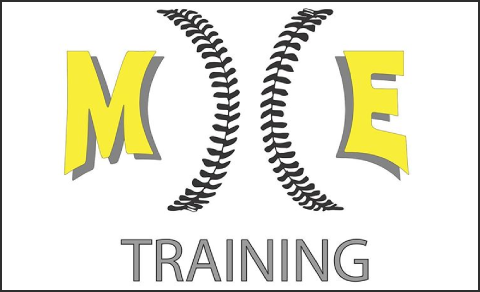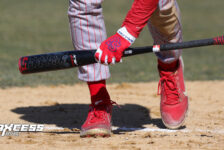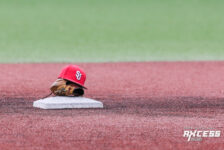by Lewis Lupowitz, PT, DPT, CSCS: Orlin & Cohen Orthopedic Group
It’s that time of year, baseball is in the air. Players, parents, and coaches are all eager for the warmer weather, “pop” of the ball into a glove and “crack” of the bat.
This is a critical time for everyone as they prepare for the start of a new season. As a sports-physical therapist specializing in the care of overhead athletes I believe it is most important to educate the masses on what it takes to get ready for the season and stay healthy throughout.
The Orlin & Cohen Orthopedic Group has partnered with Prospect Performance Factory and recently performed pre-season screens for players. This allowed us to catch any glaring issues prior to the season getting underway and will also help us have a reference for individuals if something presents itself during the season.

If you missed this screening or were not involved, not to worry. I will go over the risk factors documented in the literature and discuss how to screen your child quickly, easily, and effectively.
The biggest risk factor for injury was pitching with arm fatigue.1 Players are at 36x increased risk for injury doing so, that is 3600% higher chances so please listen to your kids and pull them when they say they’re tired. Overuse, defined as: pitching 8+ months per year, 80+ pitches per game, 100+ innings per season, and playing in showcases were the next highest risk factor for injury.2 If a kid is pulled from pitching, they should not play catcher due to high volume of throwing. Additionally, individuals who were 4cm taller and 5kg heavier for their age group were at higher risk and special attention should be placed. Lastly kids should not specialize in baseball / pitching only; they should play other sports throughout the year and learn to move their body athletically.
Now that we understand the factors that parents and coaches can control let’s dive into some specific variables that may place individuals at a higher risk throughout the season, how to screen for them and ways to improve on deficits if they present themselves.
There are 4 major things to look for in a player’s range of motion that may put them at risk for injury. Three of which are related to the elbow while the fourth is associated with the shoulder.
With respect to the elbow; 1. Pitchers with 5 degrees or more of shoulder flexion in their non-throwing arm as compared to throwing arm were at 2.8x increased risk. 3 2. Pitchers with 5 degrees or more total rotational range of motion (external rotation + internal rotation) were at 2.6x increased risk. 3 3 of the 145 players who underwent UCL surgery between 2005-2014, 40 had a recent hip injury due to limited internal rotation range of motion 4, 5
With respect to the shoulder; MLB players with insufficient external rotation; defined as 5 degrees or more in the non-throwing arm as compared to the throwing arm were 2.2 times more likely to be placed on the disabled list for a shoulder injury.6
Now that we know all the risk factors both modifiable and non-modifiable let’s figure out how to screen for this at home and more importantly put in a plan of action for those who need it.
- Shoulder Flexion Assessment & How to Fix It


Set up seated against a wall with a yoga block or foam roller placed between your shoulder blades, simply raise arms as high as you can overhead without arching your back. Looking from the side aim to see which has more motion. If restrictions are found perform the stretch in second pitcher. Place the limited arm overhead and step back with the leg of the same side; use the other arm to push yourself away from the object feeling a stretch from the arm pit to hip.
- Shoulder Rotation: Assess / Internal Rotation / External Rotation



Perform the same set up as for shoulder flexion but instead aim to rotate the arm while at 90 degrees. Limitations will present themselves due to bony changes that occur (humeral retroversion) however the overarching vision should be that external rotation (going back) on the throwing arm should exceed that of the non-throwing arm and that the total motion is near symmetrical. If limitations in internal rotation persist it is advised that the individual perform the modified cross-body stretch as seen in the dual image, and if external rotation deficits persist that the individual perform the stretch / soft-tissue release as seen in the third picture.
- Hip Internal Rotation


To assess hip range of motion, sit on the edge of a table and place a foam roller between your knees and aim to rotate your heels outward (without lifting / hiking your hips off the table). We are looking for about 40-45 degrees of internal rotation (as seen on this athlete’s right hip) or near symmetrical motion side to side. If limitations persist it is advised for the individual to perform the stretch in the right picture. The set up is 90-90 hip flexion and knee flexion, focus on rotating your torso over the trail leg while applying pressure into the ground.
While motion is a big factor and stretching is important, I am a firm believer in exercise for improvement in performance and reduction of symptoms / risk for injury. The Thrower’s Ten Program, established by Wilk et al., is an evidence-based exercise program for the overhead athlete.7 This program utilizes isotonic movements that are derived from electromyographic research to specifically address vital muscles involved in the throwing motion. In 2011 Escamallia et al., reported that participating in this program for 6 weeks enhanced athletic performance by indicating approximately 2% increase in ball velocity.8 I have personally worked with Dr. Kevin Wilk to help develop a modification to this program which addresses the unique characteristics of the youth athlete.
For a complete guide to an in-season exercise program check out the Youth Thrower’s Ten Exercise program 9 or be sure to stop into Prospect Performance Factory for a copy.
We have now reviewed the risk factors, along with ways to assess and address at home. All in all, I think it is primarily the responsibility of the parents and coaches to stay educated on these topics to help keep our players safe this season. However, if anything does come up through the season be sure to visit Orlin & Cohen Orthopedic group as we have the medical staff that understands how to keep your kid in the game.
References
- Fleisig GS, Andrews JR, Cutter GR, et al. Risk of serious injury for young baseball pitchers: a 10-year prospective study. Am J Sports Med. 2011;39(2):253-257.
- Olsen SJ II, Fleisig GS, Dun S, Loftice J, Andrews JR. Risk factors for shoulder and elbow injuries in adolescent baseball pitchers. Am J Sports Med. 2006;34(6):905-912.
- Wilk KE, Macrina LC, Fleisig GS, et al. Deficits in Glenohumeral Passive Range of Motion Increase Risk of Shoulder Injury in Professional Baseball Pitchers: A Prospective Study. Am J Sports Med. 2015;43(10):2379-2385.
- Kantrowitz DE, Trofa DP, Woode DR, Ahmad CS, Lynch TS. Athletic Hip Injuries in Major League Baseball Pitchers Associated With Ulnar Collateral Ligament Tears. Orthop J Sports Med. 2018;6(10):2325967118800704. Published 2018 Oct 1.
- Li X, Ma R, Zhou H, et al. Evaluation of Hip Internal and External Rotation Range of Motion as an Injury Risk Factor for Hip, Abdominal and Groin Injuries in Professional Baseball Players. Orthop Rev (Pavia). 2015;7(4):6142. Published 2015 Dec 28.
-
- Wilk KE, Macrina LC, Fleisig GS, et al. Deficits in Glenohumeral Passive Range of Motion Increase Risk of Shoulder Injury in Professional Baseball Pitchers: A Prospective Study. Am J Sports Med. 2015;43(10):2379-2385.
- Wilk KE, Andrews JR, Arrigo CA, et al. Preventative and Rehabilitative Exercises for the Shoulder and Elbow. 5th ed. Birmingham, AL: American Sports Medicine Institute; 1997.
- Escamilla RF, Ionno M, deMahy MS, et al. Comparison of three baseball-specific-6-week training programs on throwing velocity in high school baseball players. J Strength Cond Res. 2012;26(7):1767-1781. doi:10.1519/jsc.0b013e318257 8301
- Wilk KE, Lupowitz LG, Arrigo CA. The Youth Throwers Ten Exercise Program: A variation of an exercise series for enhanced dynamic shoulder control in the youth overhead throwing athlete. IJSPT. 2021;16(6):1387-1395












